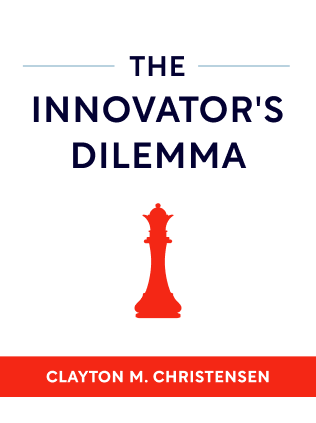

This article is an excerpt from the Shortform summary of "The Innovator's Dilemma" by Clayton M. Christensen. Shortform has the world's best summaries of books you should be reading.
Like this article? Sign up for a free trial here .
What is oversupply? How does performance oversupply create opportunities for disruptive innovation?
Oversupply, specifically performance oversupply, is an excess of features for a given product or industry. Established firms may commit to these top-tier products that provide more performance than customers care about.
Read more about performance oversupply and the opportunities for disruptive innovation.
What Is Oversupply?
The problem for established companies is that performance oversupply creates an opening for disruptive technology to forge a place in the market. Disruptive products that meet customers’ needs and offer lower prices, convenience, and more simplicity can edge existing products—and established firms—out of the market.
Technology oversupply triggers products to enter the next phase in their life cycles. Each phase is characterized by the primary reason customers choose one product over another. The phases include:
- Functionality: Which product does the job best?
- Reliability: Which product does the job most consistently?
- Convenience: Which product is easiest to buy and use?
- Price: Which product is the most affordable?
Three Options
Companies that may be facing performance oversupply should evaluate how the technology and customers’ needs will likely progress.
Is the technology likely to continue advancing, or will it soon be plateauing on the S-curve? And will customers have a need for additional improvements, or are there limitations for how they can use the technology? For example, car makers may be able to make engines more powerful, but drivers still have to abide by speed limits.
By assessing these two trajectories, managers can determine the likelihood of performance oversupply. Companies that face performance oversupply have three options:
- Climb upmarket, continually adopting sustaining technologies and pursuing higher-tier customers, while leaving lower-tier customers open for disruptive innovations. This is the course most companies take.
- Keep pace with customers, meeting their needs even as their focus shifts from functionality to reliability to convenience to price. This is difficult to do successfully, for reasons we’ve talked about throughout this summary (for example, companies’ processes and values impede them from producing lower-cost products).
- Leverage marketing to make customers want higher-performing products. However, it’s unclear how long a company can sustain this approach before a lower-tier disruptive product invades the market.
Any of these strategies can work if a company executes it with a clear understanding of the trajectories of its customers’ needs and of the technological advancements.
Performance oversupply is straightforward in theory, but it requires managers to be acutely tuned into their customers and the market as a whole.
Throughout a product’s existence up to that point, the managers have maintained success by asking the same question: How can we make this product perform better? Managers must recognize when that is no longer the most important question.

———End of Preview———
Like what you just read? Read the rest of the world's best summary of Clayton M. Christensen's "The Innovator's Dilemma" at Shortform .
Here's what you'll find in our full The Innovator's Dilemma summary :
- Christensen's famous theory of disruptive innovation
- Why incumbent companies often ignore the disruptive threat, then move too slowly once the threat becomes obvious
- How you can disrupt entire industries yourself






